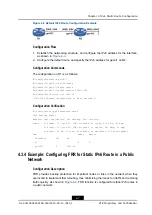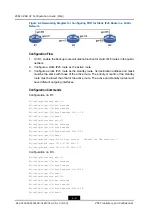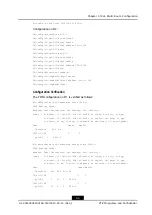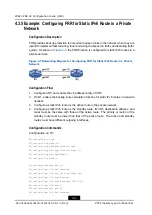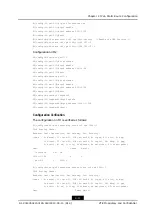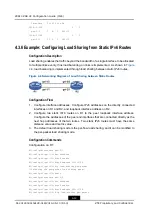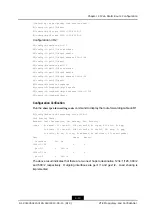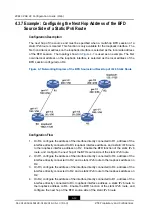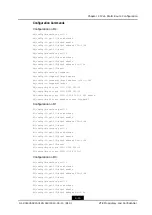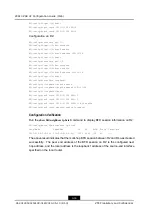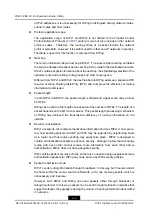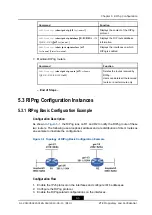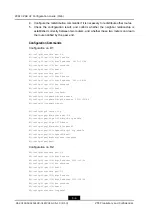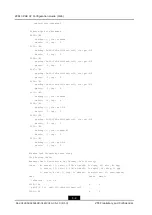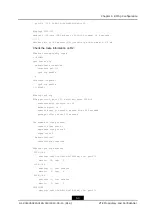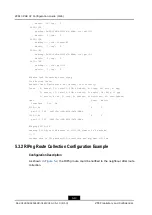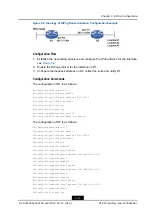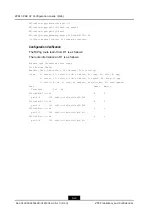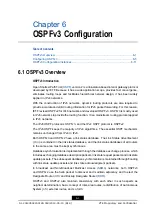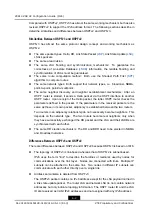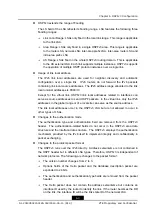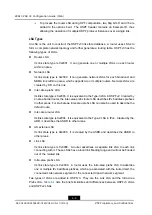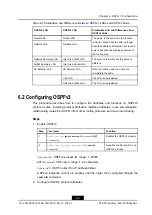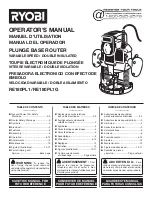
ZXR10 ZSR V2 Configuration Guide (IPv6)
of IPv6 addresses, it is unnecessary for RIPng to distinguish among network routes,
subnet routes and host routes.
l
Protocol applicable scope
The application scope of RIPv1 and RIPv2 is not limited to the Transfer Control
Protocol/Internet Protocol (
) protocol suite but also includes other network
protocol suites.
Therefore, the routing entries of a packet include the network
protocol suite field. However, it is seldom used for other non-IP networks in practice.
Therefore, support for this function is removed from RIPng.
l
Next hop
There is no information about next hop in RIPv1. The router at the receiving end takes
the source address of a packet as the next hop for the route to the destination network.
RIPv2 contains explicit information about the next hop, thus facilitating selection of the
optimum route and avoiding routing loops and slow convergence.
Different from RIPv1 and RIPv2, the next hop field in RIPng exists as a separate RTE
to avoid overlong Routing table Entry (RTE) and to improve the efficiency of routing
information transmission.
l
Packet length
In both RIPv1 and RIPv2, the packet length is limited and a packet can carry at most
25 RTEs.
RIPng has no limit on the length of a packet and the number of RTEs. The length of a
packet depends on the MTU of a medium. This packet length processing mechanism
of RIPng has improved the transmission efficiency of routing information on the
network.
l
Security consideration
RIPv1 packets do not contain authentication information and thus RIPv1 is not secure.
Any host sending packets via UDP port 520 may be regarded by neighboring hosts
as a router and thus router spoofing may easily take place. RIPv2 is designed to
contain authentication packets to enhance security. Although routers that exchange
routes with each other cannot receive route information from each other before
authentication, RIPv2 does not have adequate security.
IPv6 contains perfect security policies, so there is no need to design separate security
authentication packets for RIPng any more but to use IPv6 security policies.
l
Packet transmission mode
RIPv1 sends routing information through broadcast. In this way, both routers and all
the hosts within the same Local Area Network (
) can receive packets, which is
unnecessary and insecure.
However, both RIPv2 and RIPng can send packets either through broadcast or
through multicast. In this way, packets can be sent through multicast in networks that
support multicast, thus greatly reducing the volume of routing information transmitted
in networks.
5-2
SJ-20140504150128-018|2014-05-10 (R1.0)
ZTE Proprietary and Confidential




